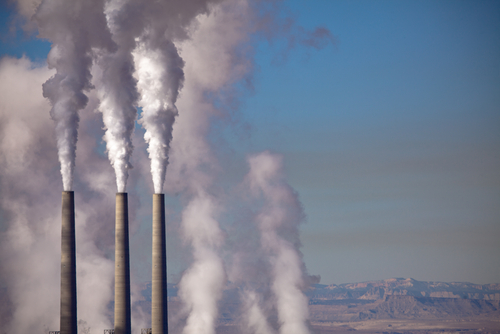
Pennsylvania business leaders warned this week that Washington’s latest proposed limits on particulate materials generated by the manufacturing sector threaten scores of jobs and could result in many factory owners throwing in the towel altogether and moving their operations elsewhere.
The Environmental Protection Agency (EPA) took comments this spring on a proposed rule change made in January that would ratchet down the national air-quality standard for soot, also known as PM25 from the current 12 micrograms per cubic meter to 9-10 micrograms; comments were also taken on the idea of even further reductions.
The EPA said such particles can be stirred up from a variety of sources, including construction sites and unpaved roads, and can also form in the air from emissions of sulfur dioxide and nitrogen oxides from factories, power plants and vehicles.
“This proposal will help ensure that all communities, especially the most vulnerable among us, are protected from exposure to harmful pollution,” said EPA Administrator Michael S. Regan. “This proposal to deliver stronger health protections against particulate matter is grounded in the best available science.”
While the EPA said the new PM25 standards would result in improved health for workers, thousands of Pennsylvania workers might wind up feeling sick about losing their livelihoods, according to the Pennsylvania Manufacturers’ Association (PMA).
The PMA pointed to a new study conducted by Oxford Economics and commissioned by the National Association of Manufacturers (NAM), which projected nationwide job losses of at least 852,100 and possibly closer to 1 million as manufacturing costs rise in response to higher energy prices.
“This analysis shows that additional unrealistic regulations will inhibit our sector from fully bouncing back, leading to more of our jobs and manufacturing operations being moved overseas,” said PMA Executive Director Carl A. Marrara. “This unnecessary offshoring would be detrimental not only to our economy but to our environment, and we strongly urge the EPA to change course on this misguided proposal.”
The NAM study did not break down the economic impact or potential job destruction by individual states, but Marrara said Pennsylvania’s reliance on gas to power its factories puts the Commonwealth in the crosshairs of a one-size-fits-all mandate. “Manufacturing is the engine that drives our economy here in Pennsylvania and across the United States, adding the most value, and sustaining tens of millions of jobs on our shop floors and in related industries,” he said.
Jay Timmons, president and CEO of NAM, added the proposed new rules would also muddle the ongoing efforts by manufacturers to steadily reduce their carbon footprint and particulates in the least disruptive way. “This analysis makes clear these new regulations will weaken our ability to invest in the technology and processes that would continue to reduce emissions while also jeopardizing high-paying manufacturing jobs,” said Timmons “We need to let manufacturers do what they do best: innovate and deploy modern technologies to protect the environment, while creating jobs and strengthening the economy.”
Meanwhile, the EPA announced Thursday it was proposing a new set of nationwide emission standards targeting carbon dioxide (CO2) and particulate matter from coal-fired power plants and from newly constructed natural-gas generators as well. The agency said the plan would cut 617 million metric tons of CO2 emissions through 2042 as well as other greenhouse gases and enough particulate matter to generate health benefits.
The EPA countered in its announcement that the proposal included “ample lead time and substantial compliance flexibilities” and predicted that “power companies can implement the standards with a negligible impact on electricity prices, well within the range of historical fluctuations.”
NAM Vice President of Energy and Resources Policy Brandon Farris said the power generation sector has been making historic gains in bringing zero-emissions sources online.
“Even as that trend continues, this proposed regulation will prove unfeasible,” Farris said. “With nearly 60 percent of our nation’s energy generated from natural gas and coal, this will either require deployment of still nascent technologies at an impractical pace or force those plants to shut down entirely. With the many threats to global energy security, that is a grave risk to our economy and to our families. The U.S. cannot afford to shut down more than half of our power generation and grind our economy to a halt.”
The EPA will accept comments on the proposed rules for 60 days following publication in the Federal Register and will then schedule a virtual public hearing.